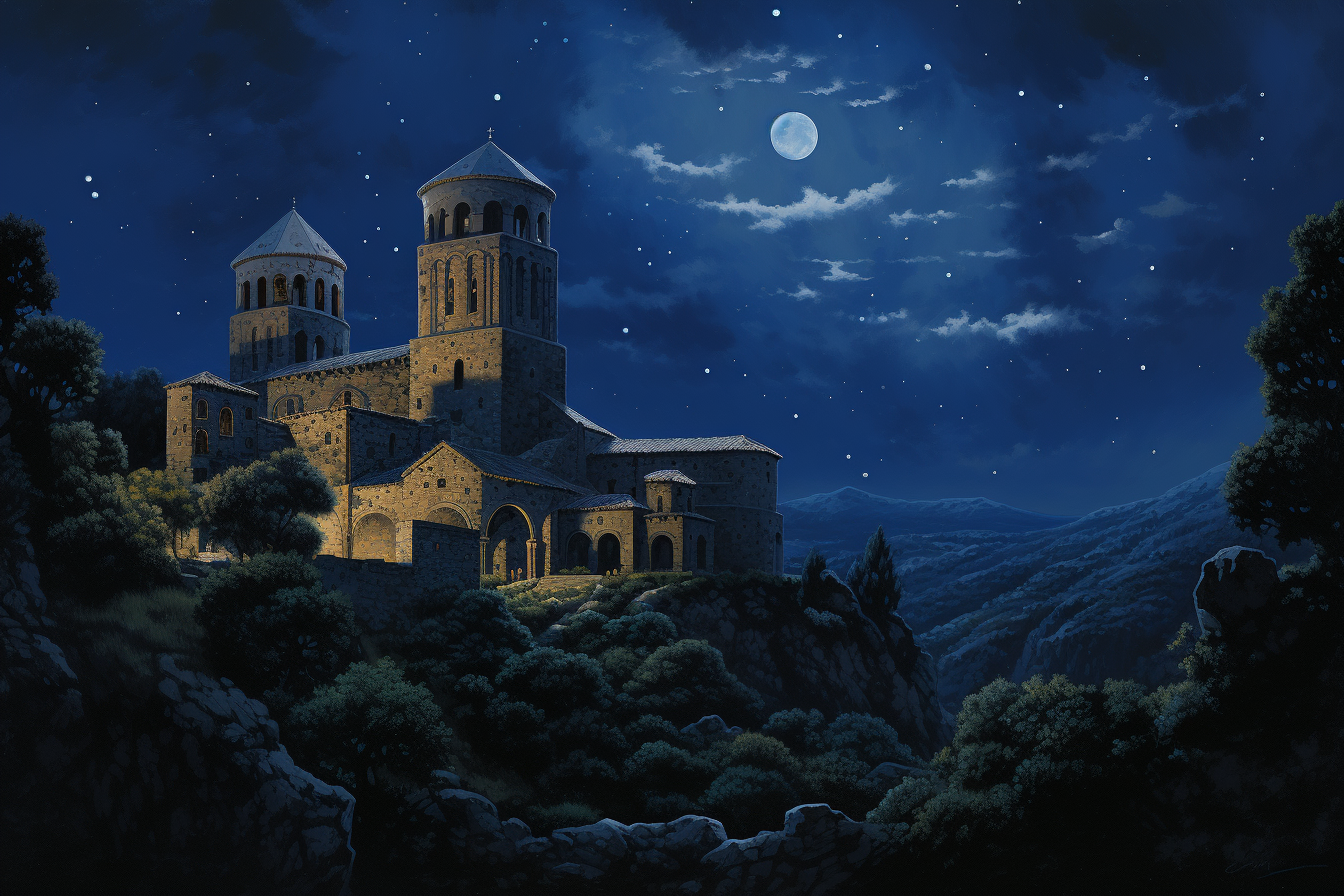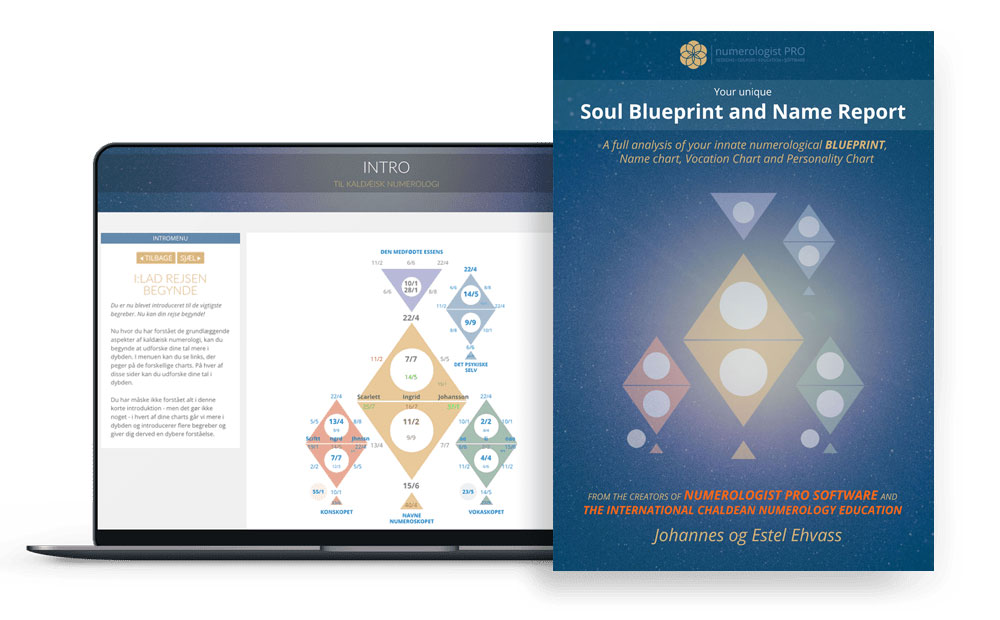Monastic Preservers

Johannes Ehvass
Welcome, dear reader! Together, we embark on a captivating journey into astrology, a timeless art and science that has accompanied humanity since its earliest days. Each astrological discovery not only mirrors the era and culture it emerged from but also feels like a celestial gift, as if the universe is directly speaking to us. Through these articles, I share with you the profound journey of how astrology has grown and evolved alongside us. Let's explore this cosmic connection that has, for millennia, enriched our understanding of ourselves and the universe around us.
Monastic Preservers: Astrological Knowledge in the Dark Ages

While the Dark Ages are often perceived as a time of intellectual decline, in reality, it was an era of preservation and germination. Against the backdrop of societal upheavals, the monastic community stood as a beacon, ensuring that the accumulated wisdom of previous eras did not vanish. Among the treasures safeguarded in the hallowed walls of monasteries was the knowledge of astrology and astronomy. This article delves into the role of monastic scriptoria in preserving astrological wisdom and explores the interaction with the Islamic world, a significant source of knowledge during the early Middle Ages.
Monastic Scriptoria: Bastions of Astrological and Astronomical Knowledge
Monastic scriptoria, dedicated writing rooms within monasteries, were among the most crucial centers of learning during the Dark Ages. Here, monks meticulously copied, preserved, and disseminated texts, ensuring a continuous flow of knowledge in a world of flux.
The Birth of the Scriptorium
The rise of the scriptorium was an organic response to the times. With the decline of the Western Roman Empire, the organized educational structures that once flourished began to wane. In this void, the Christian Church, and by extension the monastic communities, took on the mantle of guardianship over the vast corpus of classical and religious literature.
Monasteries became self-sufficient islands of stability and learning amidst the turbulent seas of invasions, migrations, and political changes. Within their walls, the scriptorium was the heart of intellectual activity.
The Preservation Process
Monks in the scriptoria undertook the laborious task of copying manuscripts by hand. This was not merely a mechanical process but a spiritual endeavor. Through their painstaking efforts, they not only preserved religious texts but also a wealth of classical literature, including works on science, philosophy, and yes, astrology and astronomy.
Astrological texts from the Greco-Roman tradition, including fragments from luminaries such as Ptolemy, found their way into these monastic repositories. Moreover, calendars, almanacs, and computus manuscripts (texts that aided in determining the date of Easter) demonstrated the intricate dance between religious observance, astronomy, and astrology.
Learning and Legacy
The scriptoria were more than mere copying centers; they were hubs of learning. Monks were often multilingual, trained in Latin, Greek, and sometimes Hebrew. This linguistic prowess enabled them to access a broader range of sources, enriching the European intellectual tradition.
The legacy of the monastic scriptoria is immense. Many classical texts, including those on astrology, might have been lost forever if not for their preservation efforts. These texts became the foundation for the intellectual revival of the later Middle Ages and the Renaissance.
Interaction and Learning from the Islamic World
While Europe was undergoing its Dark Age transformations, another intellectual powerhouse was rising in the East—the Islamic world. The Islamic Golden Age, spanning the 8th to the 13th century, witnessed a flourishing of sciences, arts, and philosophy. Astrology and astronomy held a special place in this blossoming.
The Transmission of Knowledge
The Islamic scholars, based in centers like Baghdad, Cordoba, and Cairo, embarked on an ambitious project to gather the world’s knowledge. They translated works from Greek, Persian, Indian, and other traditions. In doing so, they became the custodians of Hellenistic astrological knowledge, which was expanded upon and refined.
Europe’s contact with the Islamic world, especially through regions like Al-Andalus (Muslim Spain) and the Crusader states, paved the way for a transfer of knowledge. Monks, scholars, and translators, often working in tandem, brought Islamic treatises on astrology and astronomy to the European audience. Notable centers of translation, like the Toledo School in Spain, facilitated this exchange.
Notable Figures and Works
Several luminaries from the Islamic world left an indelible mark on European astrological thought. Scholars like Al-Farabi, Avicenna (Ibn Sina), and Al-Razi wrote extensively on various sciences, including astrology. Their works, translated into Latin, became standard references in European academic circles.
Perhaps the most influential was Albumasar (Abū Maʿshar). His treatise, Kitab al-madkhal al-kabir (The Great Introduction to Astrology), provided comprehensive insights into astrological theory and practice. Once translated, it profoundly influenced European scholars from the 12th century onwards.
A Synergistic Relationship
While the transfer of knowledge was initially from the Islamic world to Europe, it soon became a two-way street. European scholars, building upon the foundation laid by Islamic and ancient sources, made their own contributions, which in turn influenced later Islamic thought. This period exemplifies a genuine intellectual symbiosis.
In conclusion, the Dark Ages were anything but “dark” for the preservation and evolution of astrological knowledge. The monastic scriptoria played an instrumental role in safeguarding the ancient wisdom, while the interaction with the Islamic world enriched and expanded the European astrological tradition. Together, these currents set the stage for the intellectual renaissance that Europe was soon to experience.
List of Notable Scriptorias
Abbey of Saint Gall
Location: St. Gallen, Switzerland
Description: The Abbey of Saint Gall was renowned for its scriptorium and library. The monks here produced numerous manuscripts, and its library remains one of the richest medieval libraries in existence.
Visitor Information: The Abbey’s library, including the scriptorium, is open to the public and has been declared a UNESCO World Heritage site.
Monte Cassino Abbey
Location: Cassino, Italy
Description: Founded by St. Benedict himself, Monte Cassino’s scriptorium was a key center for the copying of religious and classical texts during the Middle Ages.
Visitor Information: The Abbey is open to visitors, and while much of the original scriptorium is not intact due to wartime damage, the site remains an important piece of monastic history.
The Abbey of Mont Saint-Michel
Location: Normandy, France
Description: The scriptorium at Mont Saint-Michel was famed for its production of illuminated manuscripts, particularly during the Norman period.
Visitor Information: Mont Saint-Michel is open to the public, and visitors can explore the historic rooms where monks once labored over precious texts.
Abbey of Fontenay
Location: Burgundy, France
Description: This Cistercian abbey had a scriptorium where monks engaged in the transcription of texts, contributing to the spread of Cistercian architecture and spirituality.
Visitor Information: The Abbey of Fontenay is a UNESCO World Heritage site, and its serene grounds can be visited by the public.
Abbey of Cluny
Location: Cluny, France
Description: The Cluny Abbey’s scriptorium was an important hub for the production of manuscripts in Europe during the Middle Ages, particularly in the 10th and 11th centuries.
Visitor Information: The remains of Cluny Abbey, including areas where the scriptorium stood, are open for tours and visits.
Lindisfarne Priory
Location: Lindisfarne (Holy Island), England
Description: The scriptorium at Lindisfarne Priory produced the famous Lindisfarne Gospels, an illuminated manuscript of profound artistry and significance.
Visitor Information: The Priory is managed by English Heritage and is accessible to the public, with the Lindisfarne Gospels held at the British Library in London.
Melk Abbey
Location: Melk, Austria
Description: Known for its impressive Baroque architecture, Melk Abbey’s medieval scriptorium was a center of scholarship and manuscript production.
Visitor Information: Melk Abbey is one of Austria’s most visited historical sites, with a museum that includes exhibits on the abbey’s monastic history and literary production.
Vivarium of Cassiodorus
Location: Squillace, Italy
Description: While not a traditional scriptorium, the Vivarium founded by Cassiodorus was an early monastic community where extensive copying of texts took place, aiming to preserve and transmit classical and Christian knowledge.
Visitor Information: The site of the Vivarium is more archeological in nature, but visitors can explore the area and learn about its historical significance.
These sites are evocative of the medieval era’s commitment to knowledge and spirituality, where the labor of copying texts was considered both a scholarly and a devotional act. While the exact scriptoria may not always be preserved, the monasteries and abbeys where they were located often offer a glimpse into this fascinating aspect of medieval life.

Johannes & Estel: Renowned authorities in Numerology, Astrology, and the esoteric arts. As the founders of Scandinavia's premier Numerology school, we're delighted to share our insights through this curated series on astrology. Dive in and discover the stars.
The Worlds Most Advanced Numerology Report

Your birthdate reveals your unique life purpose, potentials, talents, weaknesses, and karma in this life.
Your names show what you attract into your life regarding your career, relationships, happiness, money, and success.
GET THE REPORT HERE
Introduction to Astrology
The history of Astrology
Moving beyond deterministic astrology
Foundation of Astrology: Planets, Signs and Houses
Astrology and the Holographic Universe
The Holographic Universe
The Human Psyche as a Mirror to The Solar System
The Human Body as a Mirror to The Star Signs
Astrology Background
Egyptian Astrology
Mayan Astrology
Chinese Astrology
Indian Astrology - Jyotish
Celtic Astrology
Tibetan Astrology
Mesopotamian Astrology
Early Mesopotamian Astrology: The Dawn of Celestial Divination
Enuma Anu Enlil: The Epicenter of Babylonian Celestial Omen Interpretation
Babylonian and Chaldean Astrology
Babylonian and Chaldean Astrology
Chaldean influence and evolution
Chaldean Wisdom: Safeguarding and Transmitting Astrological Knowledge
Hellenistic Astrology
Hellenistic Astrology background
Claudius Ptolemy and Tetrabiblos
Vettius Valens
Dorotheus of Sidon
Persian Astrology
Persian Astrology background
Sassanian Astrology
Late Antiquity and The Transition Period
Late Antiquity and The Transition Period
Hellenistic to Islamic Transition: The Torchbearers of Astrological Wisdom
Islamic Golden Age
Arabian Astrology Background
Arabian Astrology Contributions
Medieval Astrology
Introduction: The Medieval Cosmos
Monastic Preservers: Astrological Knowledge in the Dark Ages
Astrology in Medieval Medicine
Kings, Queens, and Constellations: Astrology in the Medieval Court
The Church and the Stars: A Contentious Relationship
Universities and Scholastic Pursuits: Academic Astrology
Astronomy & Astrology: Tools of the Trade
Medieval Astrological Houses and the Synthesis of Traditions
Transition to the Renaissance: Humanism and the Celestial Arts
Reflections: Medieval Astrology's Echoes in Modern Practice
Astrological Art of the Middle Ages
Famous Medieval Astrologers
Medieval Astrological Texts
Renaissance Astrology
Renaissance Humanism and Astrology
Scientific Advancements and Astrology
The Social Fabric: Astrology in Everyday Renaissance Life
Court Astrologers of the Renaissance
Controversies and Conflicts: Astrology Under Scrutiny
Renaissance Texts and Authors: Continuation of a Tradition
Astrology and Art: Celestial Imagery in the Renaissance
Renaissance Astrological Practices: Evolutions and Innovations
End of the Renaissance: The Gradual Decline of Astrological Influence
Renaissance Astrology's Echo in the Modern World
Enlightenment Astrology
Introduction: The Enlightenment and Astrology
Challenging the Stars: Astrology's Critics during the Enlightenment
Astrology and the New World
Astrology in the 19th Century
The Dawn of Psychological Astrology
Astrology in the 20th Century: A Modern Renaissance
Astrological Associations and Schools
Modern Controversies and Astrology
Astrology and Popular Culture
Astrology and Technology
Current Trends and Future Directions in Astrology
Conclusion: Reflecting on Astrology's Evolution
The Planet Significances
The Sun in Astrology
The Moon in Astrology
Mercury in Astrology
Venus in Astrology
Mars in Astrology
Jupiter in Astrology
Saturn in Astrology
Uranus in Astrology
Neptune in Astrology
Pluto in Astrology
Chiron in Astrology
Black Moon Lilith in Astrology
Pars Fortuna in Astrology
Ceres in Astrology
Houses in Astrology
Introduction to Astrological Houses
The Angular Houses
The Succedent Houses
The Cadent Houses
The 1st House
The 2nd House
The 3rd House
The 4th House
The 5th House
The 6th House
The 7th House
The 8th House
The 9th House
The 10th House
The 11th House
The 12th House
Interaction Between Houses
Derived Houses, House Rulers, and Interceptions
Conclusion: Synthesizing House Knowledge
All Materials © 2023 & 2024 Numerologist PRO
Terms of Service: Information provided by Numerologist PRO and/or from this web site is not intended as advice (medical, psychological, financial or other), nor is it intended to replace your work with a qualified professional (medical or otherwise). You should maintain your relationship with your providers and consider the services of this site as informational only. Any information, stories, examples, or testimonials presented on this website do not constitute a warranty, guarantee, or prediction regarding the outcome of an individual. This web site is a sharing of knowledge and information of numerology/energy work based on the experiences of Numerologist PRO. You are encouraged to make your own decisions based on your own research and inner guidance. By booking and receiving services, you agree to fully release and hold harmless Numerologist PRO and all it's affiliated numerologists from and against any liability or claim that may arise out of or in connection with their service(s).
Numerologist PRO © 2021

CONTACT
numerologist@numerologistpro.com
LIKE US, and get free numerology tools, info about your personal numbers, best business dates of the year - and more!
YOUR FREE NUMEROSCOPE CHART
Enter your name and email below and get access to our free online numerology chart tool.